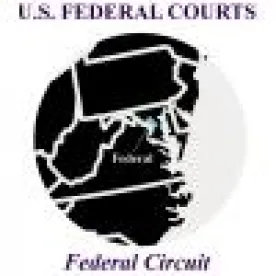Granting a petition for rehearing en banc, the US Court of Appeals for the Federal Circuit decided to revisit the effect of the Supreme Court’s 2007 decision in KSR International v. Teleflex on design patents. LKQ Corporation v. GM Global Technology Operations, Case No. 21-2348 (Fed. Cir. June 30, 2023) (per curiam). The Federal Circuit withdrew its earlier panel decision addressing KSR’s application to design patents.
This case arose from an inter partes review (IPR) filed by LKQ against GM alleging that GM’s design patent for a vehicle fender was obvious and/or anticipated. In its original opinion, the Federal Circuit applied its predecessor court’s design patent test for obviousness in In re Rosen (CCPA 1982), as well as its decision in Durling v. Spectrum Furniture (Fed. Cir. 1996), ultimately finding that GM’s design patent was not obvious or anticipated and affirming the Patent Trial & Appeal Board’s decision. The Federal Circuit determined that it was unclear whether the Supreme Court had overruled Durling and Rosen with KSR, so it did not apply KSR. Judge Lourie provided an additional opinion that KSR did not overrule Rosen. Judge Stark concurred in the judgment but found that LKQ had forfeited its argument that KSR overruled Rosen.
In its order for en banc review, the Federal Circuit asked the parties to address whether KSR abrogates Rosen and Durling and whether KSR applies to design patents regardless of whether it overrules or abrogates Rosen and Durling. Specifically, the Court inquired whether KSR’s “expansive and flexible approach” means that Durling’s two requirements should be modified or eliminated. Durling’s first requirement is that “[b]efore one can begin to combine prior art designs . . . one must find a single reference, ‘a something in existence, the design characteristics of which are basically the same as the claimed design.’” Its second requirement is that secondary references “may only be used to modify the primary reference if they are ‘so related to the primary reference that the appearance of certain ornamental features in one would suggest the application of those features to the other.’”
The Federal Circuit also asked the parties to address the appropriate test for evaluating the obviousness of design patents in the event the Rosen-Durling test was to be eliminated or modified.
The Federal Circuit further requested that the parties address whether eliminating the Rosen-Durling test would cause uncertainty in a settled area of law. Finally, the Court asked whether any differences between design patents and utility patents are relevant to the design patent obviousness inquiry.
The Federal Circuit indicated that the issues of anticipation and forfeiture from the initial appeal were preserved, but that additional briefing on those issues was not required. The Court invited the United States to participate as amicus curiae.
Practice Note: With the Federal Circuit granting rehearing en banc, there is a possibility that the Court may extend the obviousness analysis of KSR to design patents.



 />i
/>i
